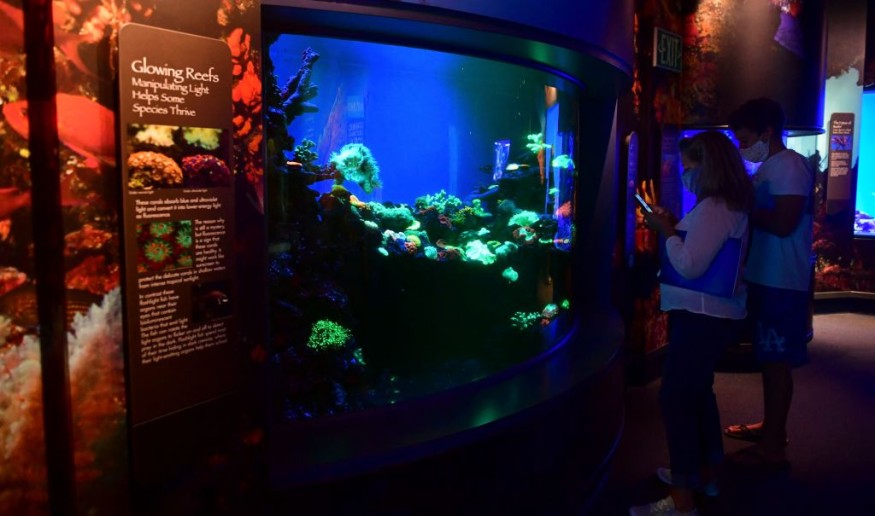
The sea is teeming with fascinating sea species that has given rise to habitats bursting with richness. Coral reefs are not different, since they come in a variety of forms, dimensions, and hues. Many animals and creatures alike actually shine in the darkness.
Glow in the Dark Corals
A group of Israeli researchers has since discovered why this is the case. Deep-reef reefs with blazing green and yellow filaments may flash vivid hues to attract food for a meal, Science Alert reported.
In an explanation made by the head of the said investigation, Tel Aviv University coral reef scientist Or Ben-Zvi, notwithstanding the inadequacies in prior information surrounding plankton sensory attention of fluorescence cues, the new investigation gives scientific proof for the prey-luring function of fluorescence in reefs, the National Oceanic and Atmospheric Administration US Department of Commerce noted.
The experts leading this latest analysis hypothesized that these deep-water reefs, some of which are luminous, would utilize illumination to lure food into their fold, comparable to numerous deep-sea creatures that generate biological process.
This capacity to glow and entice animals appears to be an important adjustment for reefs stranded on the bottom, particularly in settings where corals demand alternate energy providers in complement [to] or as a replacement for photosynthesis.
However, mesophotic coral reefs, which thrive in moderate, blue-shifted light, tend to be a bit distinct, with no indication that their fluorescence provides any form of defense or energy increase as of yet.
Certain brave coral reefs, on the other hand, continue to thrive at deeper water, far below ocean in the gloomy, chilly, water depths. It appears that fluorescent green reefs were predated on more than their yellow-fluorescing counterparts, consuming more A salina shrimp in 30 minutes.
Finally, the authors assessed predatory frequencies between various colored Euphyllia paradivisa reefs obtained at levels of 45 meters in the Gulf of Eilat and transferred for laboratory for testing.
As shown in the study published by Ben-Zvi and peers in the journal of Communications Biology, the yellow morph of E. paradivisa was discovered to be the lowest plentiful in its native surroundings in the moderately thick reefs of Eilat, which nowadays can conceivably be described by the lower foraging appeal to this hue obtained in the existing research.
Also read : New Species of Salamanders Have Been Found in Southern Appalachian Mountains in United States
Deep Sea Corals
The scientists evaluated as to if tiny shrimp (Artemia salina) favored a green or orange bright point over transparent, reflecting, or matt-colored objects on the other end of an aquarium in a number of experimental studies.
However, the research results highlight why corals, which constitute the foundation of biologically diverse ecological systems, are so important to conserve.
Tel Aviv University Ocean scientist and primary researcher Yossi Loya in an interview told that most corals have a bright color scheme that accentuates their mouths or tentacle ends. In which Anisomysis Marisrubri, a native crustacean that feeds on corals in the Gulf, favored fluorescent signals versus reflecting targets, while an imported variety of fish larvae did not.
Rendering it's worth noting that this research only examined at one type of mesophotic reef. Thus, Ben-Zvi and her associates went in, studying coral organisms that live at low-light levels and depend on predators rather than photosynthesis for nourishment.
Additional study is therefore required to properly comprehend how plankton as well as various coral-sustaining crustaceans see hue, which is expected to vary according on variety, locality, and developmental stage, as per Eurekalert.
When the investigators conducted trials at the Gulf of Eilat, situated near the northern edge of the Red Sea, they discovered consistent observations.
Related article : More than 30 Sea Turtles Found Injured or Dead with Stab Wounds on a Remote Island in Japan
© 2026 NatureWorldNews.com All rights reserved. Do not reproduce without permission.





